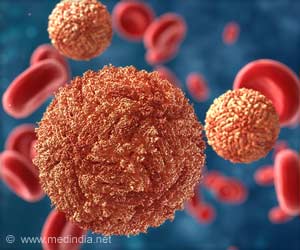Anti-psychotic drug and a statin combination along with radiation improves the overall survival in mice with glioblastoma.

‘Dopamine receptor antagonist in combination with Atorvastatin and radiation may help extend the survival for people with glioblastoma.’
Read More..




Radiation therapy is part of the standard-of-care treatment regimen for glioblastoma, often helping prolong the survival of patients. However, survival times have not improved significantly over the past two decades and attempts to improve the efficacy of radiotherapy through the use of pharmaceuticals have been hampered by the normal tissue toxicity of the drugs and the inability to penetrate the blood-brain barrier.Read More..
UCLA researchers previously reported that the first-generation dopamine receptor antagonist trifluoperazine in combination with radiation prolonged survival in mouse models of glioblastoma, but ultimately, the mice become resistant to the therapy.
To help overcome this resistance, the team used quetiapine, a second-generation dopamine receptor antagonist, which not only enhanced the efficacy of radiotherapy in glioblastoma but also generated a metabolic vulnerability in the lipid homeostasis.
The discovery that the combination induced the cholesterol biosynthesis pathway allowed the team to target this process with statins. The team tested the approach using patient-derived glioblastoma lines provided by the Biospecimen and Pathology Core of the UCLA SPORE in Brain Cancer.
Quetiapine was identified in a screen of dopamine receptor antagonists for their ability to prevent phenotype conversion of non-tumorigenic glioblastoma cells into radiation-induced glioma initiating cells. Atorvastatin (Lipitor) was selected because of its known ability to cross the blood-brain-barrier.
Advertisement
Advertisement











